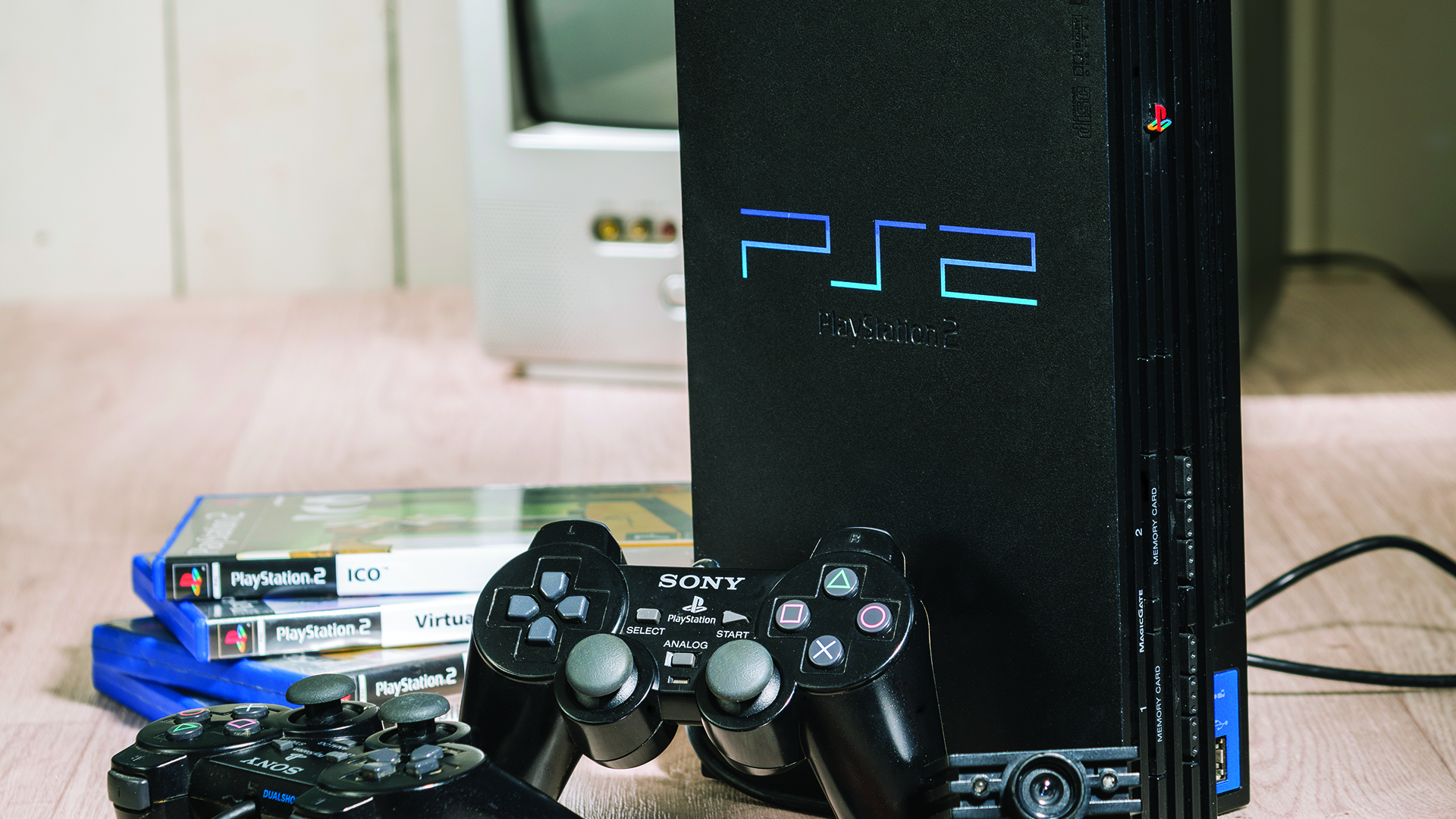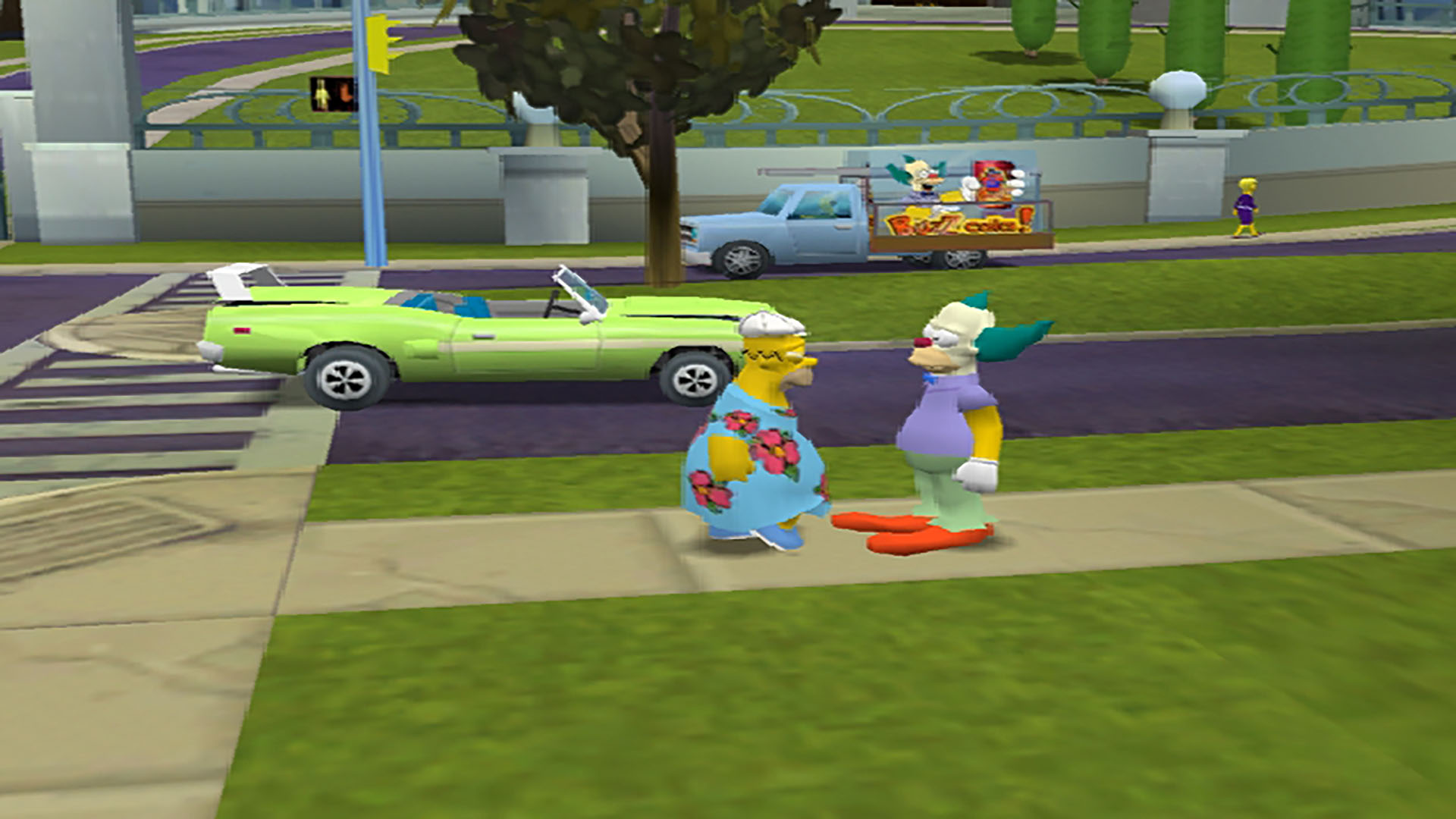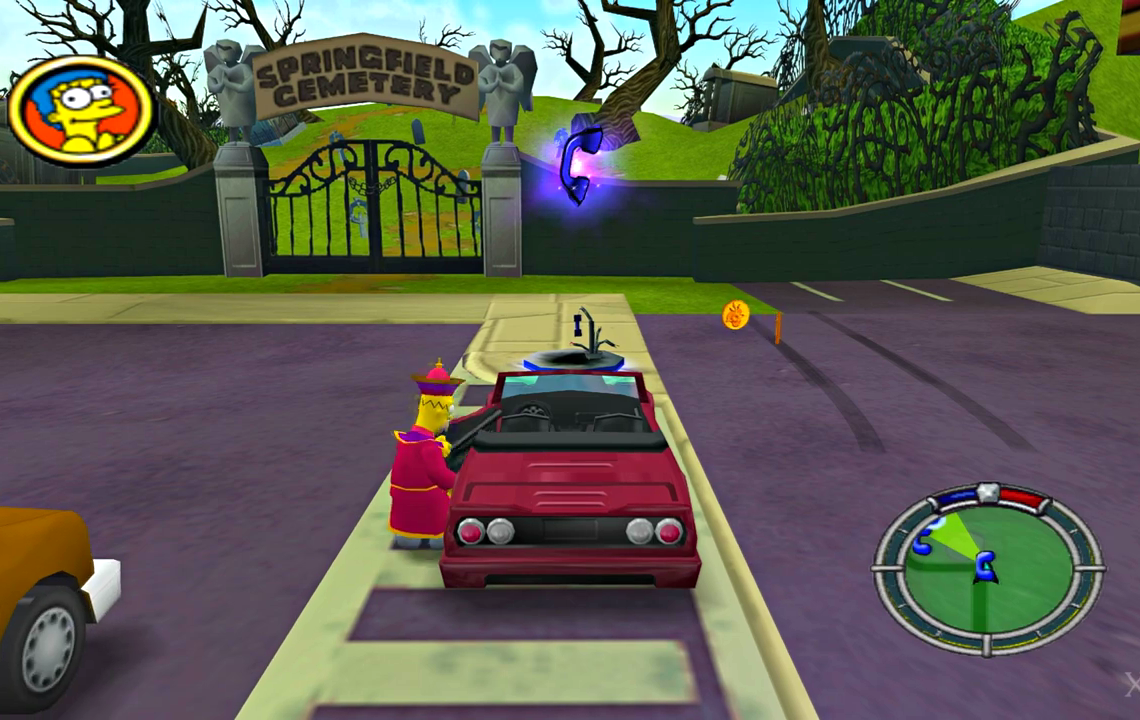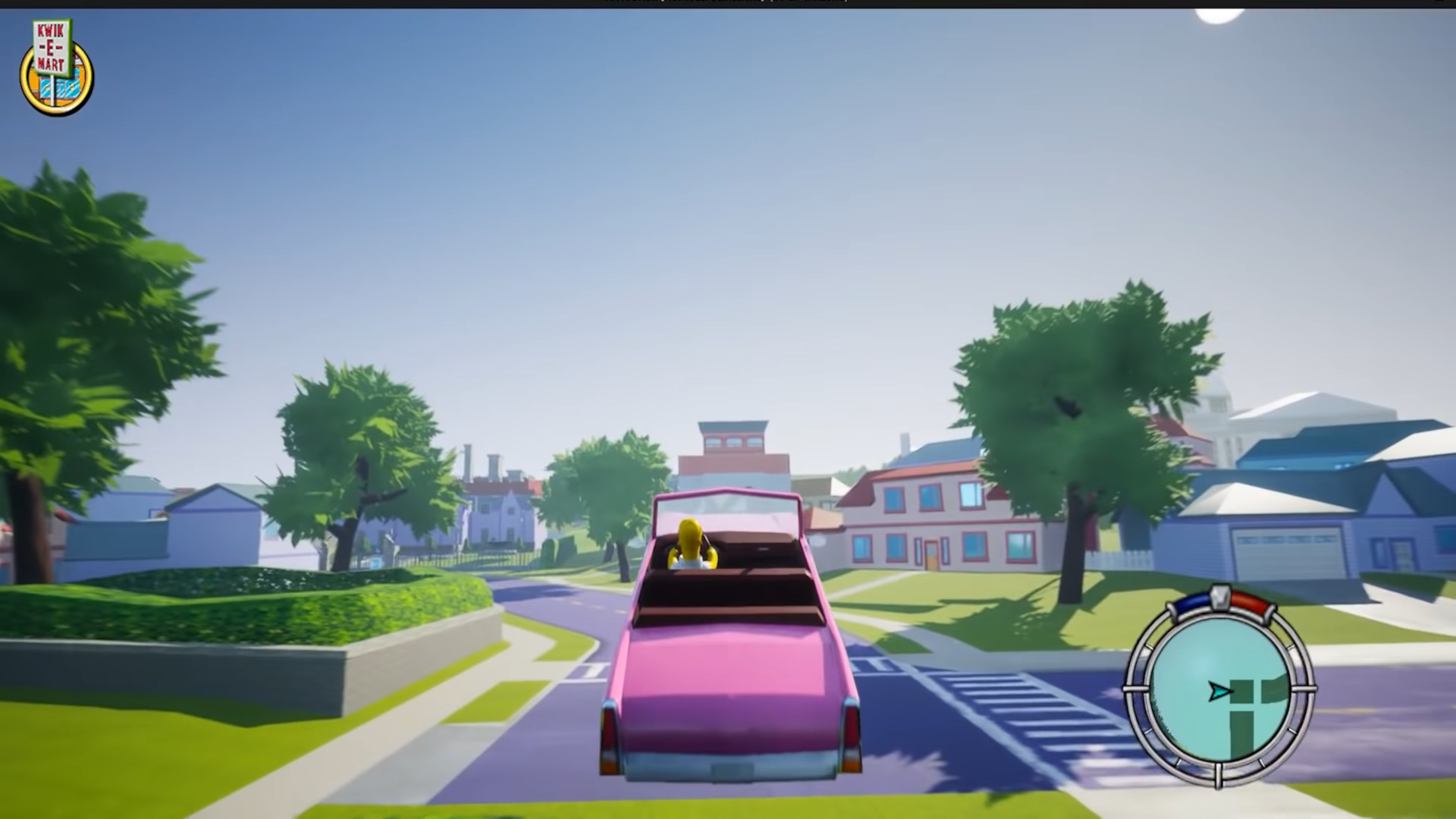20 years on, The Simpsons Hit and Run designer reflects on the enduring legacy of the beloved "GTA for kids"
How a Simpsons driving game became a success and a cult classic all at once

The release of The Simpsons: Hit & Run two decades ago may have followed what's considered by many as the most popular era of The Simpsons, but few would have predicted the levels of fondness and esteem 2003's Hit & Run still enjoys today. Developed by Canadian studio Radical Entertainment and released for PS2, Nintendo GameCube and Xbox (and later on PC), The Simpsons: Hit & Run is hailed as a classic by avid and casual gamers alike, as a game that transcends generations with its appeal.
"Hit & Run is still the highest rated Simpsons game ever made, according to Metacritic," The Simpsons: Hit & Run lead game designer Joe McGinn tells GamesRadar+. "And if I sound proud of that, yeah I am a bit. I am very surprised and pleased that people still love the game. I gave a talk to some high school kids about my computer science career the other day, and I was amazed that some of them had played Hit & Run. They weren't even born when it came out!"
But the road to release for Hit & Run was far from smooth for McGinn and the team at Radical Entertainment. Despite having developed dozens of games before the turn of the century – including adaptations of other popular franchises such as Rocky & Bullwinkle, Beavis & Butthead, and The Terminator – Radical's luck changed ahead of its introduction to the town of Springfield.
You Only Move Twice


McGinn continues: "Three months into my first gaming job, our publisher cancelled all four of the studio's games on the same day. Welcome to the game industry. But Radical was a great company, they didn't lay off a single employee [and] we started making demos and game pitches."
"We heard Fox Interactive was looking to make a Simpsons driving game. Many other studios also pitched games to them, but our cancelled games actually worked to our advantage, because we had the person-power to make a proof-of-concept demo, where everyone else was pitching on paper. We won the contract and never looked back."
Yet Radical's first attempt at a Simpsons game – The Simpsons: Road Rage, released in 2001 – didn't quite turn out how its developers had hoped. With only 12 months to bring it to life, within a team who were still finding their feet together, making their first game as a group, and their first game as individuals on new consoles, the pressure was on. Road Rage might not have been the greatest success in the world of officially-licensed games, but it did allow the Radical Entertainment development team an opportunity to learn from its mistakes with that game's spiritual successor, The Simpsons: Hit & Run.
Looking back, McGinn clearly remembers the starting point for that process. "Do the physics first," he says. "Before building a single road, we needed to know how the vehicles drive and feel. We had three pillars that we talked about incessantly until we drove the team crazy, and then we still talked about them: fun driving gameplay, exploring an immersive Springfield city, and to never forget we are making a comedy."
Weekly digests, tales from the communities you love, and more
Last Exit to Springfield


The Simpsons: Hit and Run fan remake has ray tracing and first-person gameplay
Learning from the mistakes of its first attempt at a Simpsons game wasn't all Radical Entertainment brought to the development of The Simpsons: Hit & Run, with the beginning of a new golden era for video games also offering sources of inspiration. Game budgets were big, says McGinn, meaning studios could create expansive 3D games without too much resistance from those controlling the purse strings.
Besides monthly meetings and playtests with Simpsons creator Matt Groening, Radical in essence was given free rein to tackle Hit & Run as it pleased – and the team was mainly influenced by the projects elsewhere that inspired them.
"There's no question Hit & Run was inspired by Grand Theft Auto 3, which we were all playing at the time," McGinn explains. "We pitched the game to the publisher as 'GTA for kids'. As game developers, the key concept we saw in GTA was exploration. Not only exploration of the game world, but of a possibility space. It may seem obvious now, but it was revolutionary then: GTA was one of the first games that gave you the freedom to solve a mission how you saw fit."
"While we didn't have the richness of gameplay mechanics to offer the same level of freedom, we embraced the principle. For example, I remember one debate about whether you should be able to drive any car, even the boring NPC cars. The publishers thought players should only be able to drive the carefully modelled character-cars. We were able to argue that this was a case where the gamer's freedom should win: every car in the game is drivable."
"Two other big influences: one was Driver. The original Driver, on PSOne, because the cars were just so much fun to drive with the action-movie-style drifting they perfected. That was the driving physics we were going for and our physics and vehicle-tuning team just nailed it. We knew we had a solid foundation to build upon when the car was fun to drive on an empty, flat surface."
"The other influence was Super Mario 64. That's the 'kids' part... taking all the nasty out of GTA and replacing it with platforming. And mechanically Mario 64 was the best platformer that had been made by that time, where we learned a lot about character control and camera."
A Star is Burns

"And while McGinn doesn't have the benefit of insight into how likely an official remake might be, he is clear about one thing: 'I would love to see it'."
Beyond its key inspirations, The Simpsons: Hit & Run has managed to stand out with inspired choices elsewhere too. Like Road Rage before it, Hit & Run recognised a value in allowing players to step into the shoes of the whole Simpsons family – while also adding beloved series regular Apu into the mix.
"Homer and Bart were obvious playable characters, [but] the team was getting to an age where some of us were having children, and some of us had daughters," explains McGinn. "So we pitched to the publisher that the whole family - well, ok maybe not Maggie - should be playable.At this time there were not a lot of developers thinking about making games accessible beyond the traditional gamer market (i.e., boys), and the publisher wasn't too keen. But in the end we won with a money argument. We had the real Simpsons voice cast, and for no small amount of money, [so] we said 'we're spending all this money for Marge and Lisa voice work, we can get our value out of it if they are playable characters'. That sold the publisher on the idea."
"Lisa became my favourite. Because we got four hours of each actor's time, and Yeardley Smith only does the one character, so she had a lot more variety of dialogue than Homer. Although we did hear that the actor's voice got tired because we gave Lisa more lines in our game than she would perform in a whole season of TV – sorry, Yeardley!"
Achieving only modest sales by today's game development standards, The Simpsons: Hit & Run was nonetheless regarded as a success for Radical Entertainment and publisher Vivendi Universal Games – though sadly not enough of one to save either from eventually shutting the doors.
And while McGinn doesn't have the benefit of insight into how likely an official remake might be, he is clear about one thing: "I would love to see it."
Real fond of retro gaming? Check out the 25 best GameCube games of all time

James is a senior journalist with the TechRadar Australia team, covering news, analysis and reviews in the worlds of tech and the web with a particular focus on smartphones, TVs and home entertainment, AR/VR, gaming and digital behaviour trends. He has worked for over six years in broadcast, digital and print journalism in Australia and also spent time as a nationally recognised academic specialising in social and digital behaviour trends. In his spare time, he can typically be found bouncing between one of a number of gaming platforms or watching anything horror.


